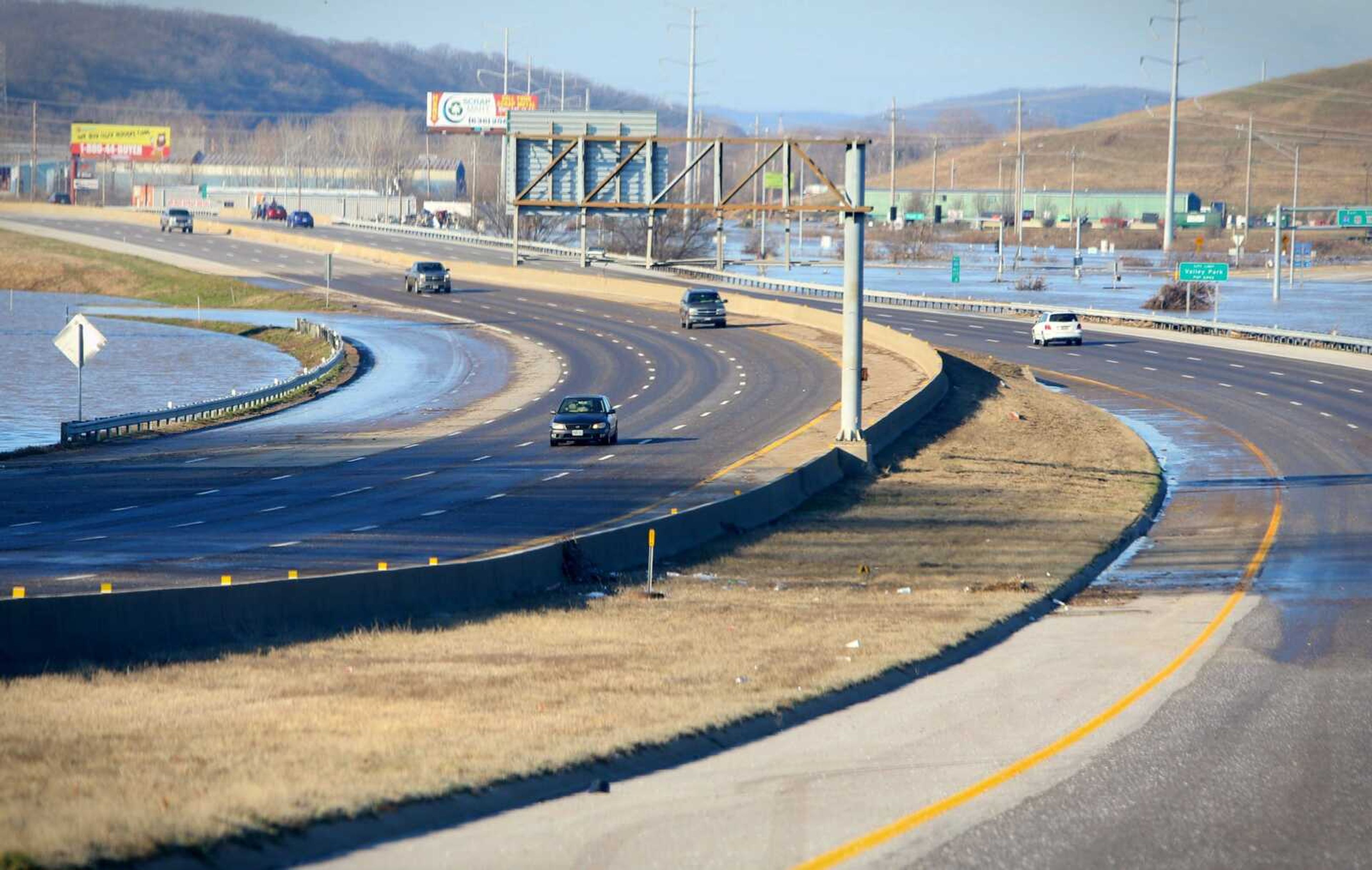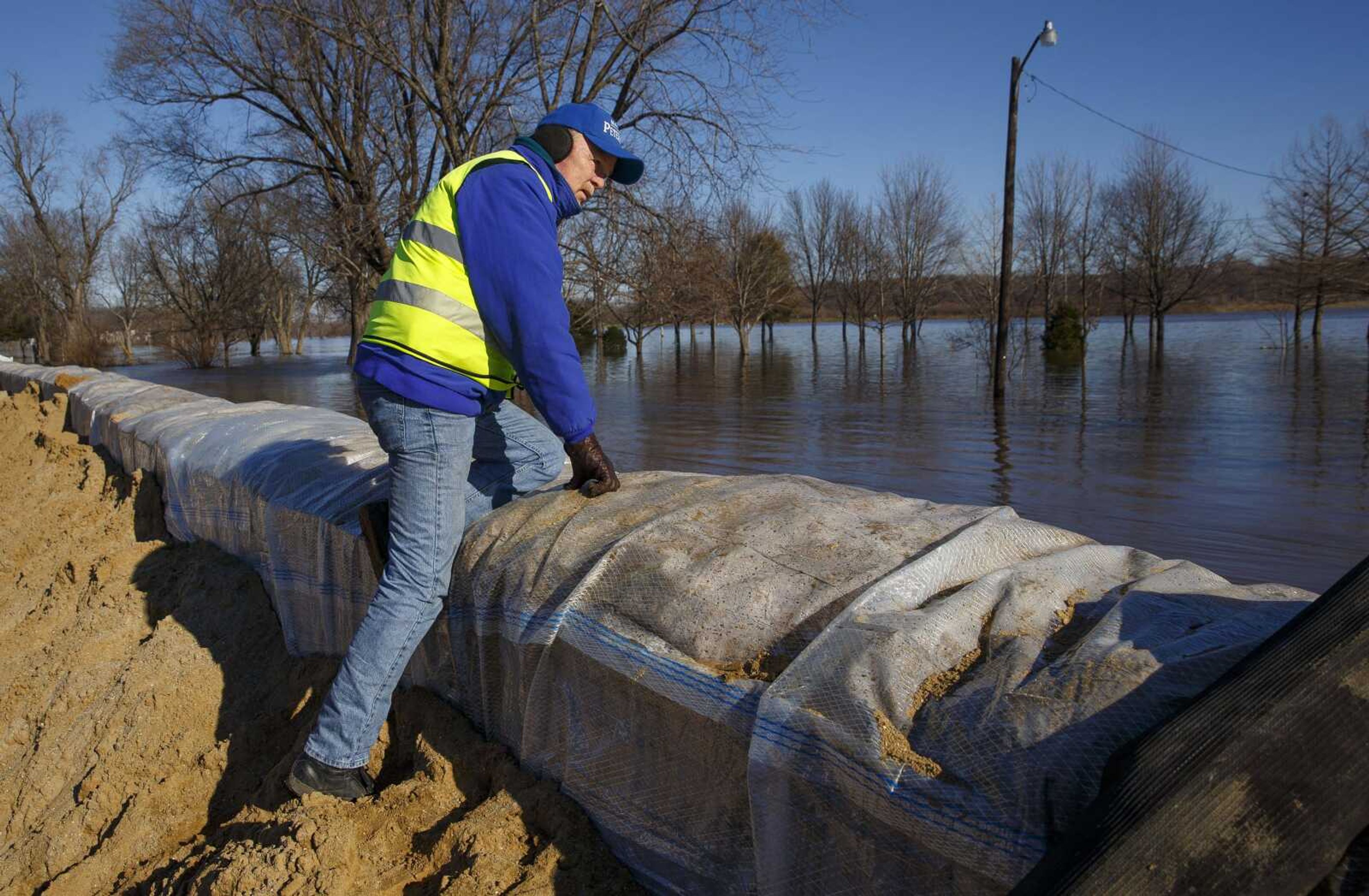Missouri, Illinois assess damage, cleanup after floods
KINCAID, Ill. -- The Mississippi River and many of its tributaries continued their retreat Sunday from historic and deadly winter flooding, leaving the silt amid a massive cleanup and recovery effort likely to take weeks, if not months. The flood, fueled by more than 10 inches of rain over a three-day period that began Christmas Day, is blamed for 25 deaths in Illinois and Missouri, reflecting Sunday's discovery of the body of a second teenager who drowned in central Illinois' Christian County...
KINCAID, Ill. -- The Mississippi River and many of its tributaries continued their retreat Sunday from historic and deadly winter flooding, leaving the silt amid a massive cleanup and recovery effort likely to take weeks, if not months.
The flood, fueled by more than 10 inches of rain over a three-day period that began Christmas Day, is blamed for 25 deaths in Illinois and Missouri, reflecting Sunday's discovery of the body of a second teenager who drowned in central Illinois' Christian County.
The Mississippi River was receding, including in Cape Girardeau, except in the far southern tip of both states. The Meramec River, the St. Louis-area tributary of the Mississippi that caused so much damage last week, already was below flood stage in the hard-hit Missouri towns of Pacific and Eureka and dropping elsewhere.
St. Louis-area cleanup largely was focused around the Meramec. Two wastewater treatment plants were so damaged by the floodwaters, raw sewage spewed into the river. Hundreds of people were evacuated in the Missouri communities of Pacific, Eureka, Valley Park and Arnold, where many homes took in water.
President Barack Obama signed a federal emergency declaration Saturday for Missouri, allowing federal aid to be used to help state and local response efforts. It also allows the Federal Emergency Management Agency to coordinate disaster relief efforts. Missouri Gov. Jay Nixon had asked for the help.

Amtrak service between St. Louis and Kansas City was back in business Sunday, four days after high water that reached the tracks at some locations forced passenger service to be halted.
In Illinois' St. Clair County just east of St. Louis, emergency management director Herb Simmons said damage assessment began Sunday after the Mississippi started to fall. Though water reached higher than 1993, this flood wasn't as bad, Simmons said.
"In '93, that water came up and stayed on the levees for several months," Simmons said. "This flood came up quick and went down quick."
But worries surfaced anew Sunday along the still-rising Illinois River north of St. Louis, where crests near the west-central Illinois towns of Valley City, Meredosia, Beardstown and Havana were to approach records before receding in coming days.
In Kincaid, a 1,400-resident central Illinois town near the Sangamon River's south fork, Gov. Bruce Rauner toured flood-damaged homes Sunday as Sharon Stivers and other residents piled ruined furniture, appliances and clothes along the street for disposal crews to pick up. Mike Crews, Christian County's emergency manager, said the worst of the inundation appeared to be past, "until the new weather comes," citing the prospect of potentially heavy rain later in the week.
Stivers shares a home with her 45-year-old daughter battling breast cancer, along with a granddaughter and four dogs. Floodwaters got 4 feet into their home, located in an area where flood insurance wasn't available.
"Am I mad?" she asked. "I lost my home. My daughter has cancer and lost her home. Am I mad? When I'm not crying I am."
Across the street, Theresa Gibson was getting help from relatives and friends clearing out what they could salvage after the flood reached 18 inches into her home, buckling newly finished oak floors and saturating walls.
"This is just horrible," Gibson, 50, lamented, noting how the fast-rising waters had allowed her only enough time to fill a couple of suitcases. "We've had floods before, but nothing like this."
In Illinois' Morgan County, home to the 1,000-resident village of Meredosia, locals were keeping eyes on levies fortified with 50,000 sandbags. As of midday Sunday at Meredosia, the Illinois was more than 10 feet above flood stage and pressing toward an expected crest Tuesday about a half-foot short of the record set in July.
While optimistic those levees would hold, Jacksonville-Morgan County emergency management director Phil McCarty said the prospect of flooding during the chill of winter carried dangerous health risks, including hypothermia.
Connect with the Southeast Missourian Newsroom:
For corrections to this story or other insights for the editor, click here. To submit a letter to the editor, click here. To learn about the Southeast Missourian’s AI Policy, click here.









